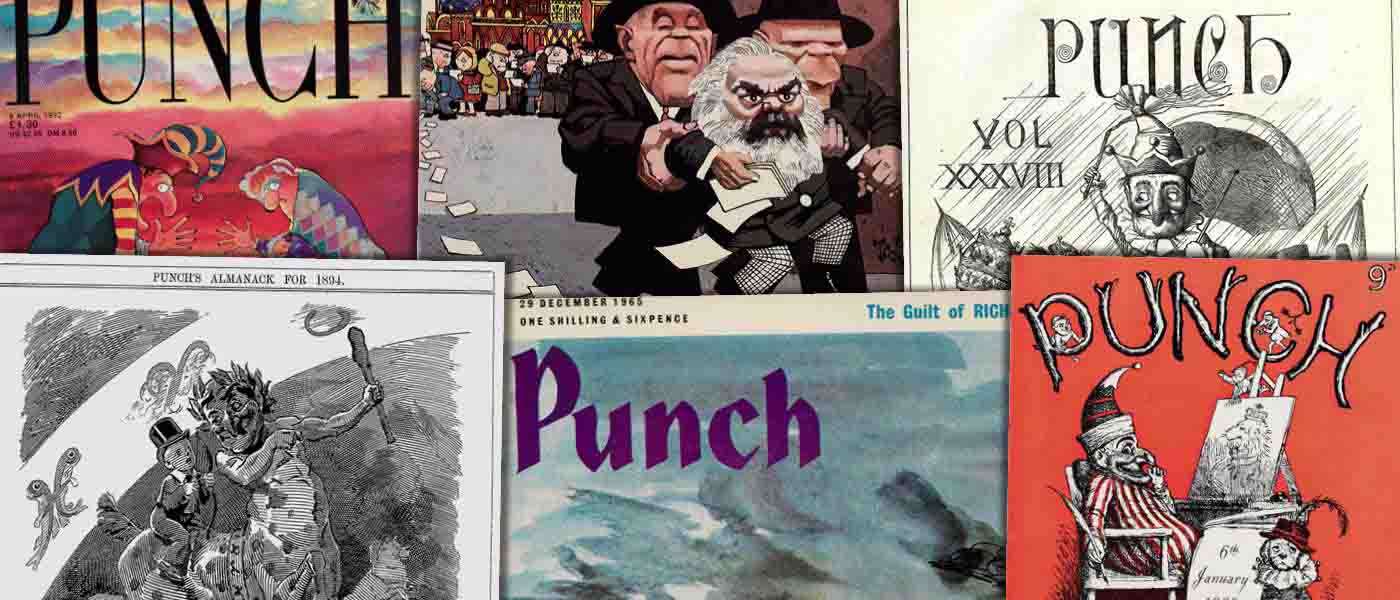Introduction
I have used Punch on a first level module entitled "Analysing Cultural Themes and Debates" as part of a BA (Hons) Media, Culture and Communication degree at Liverpool John Moores University, UK. Student activities were based around introducing students to different forms of comedy from print culture to stand-up, in order to evaluate how effective comedy can be as a form of communication. The course was organised chronologically beginning with Jonathan Swift in the eighteenth century, through nineteenth century print culture and into the twentieth century with examples from Punch and Private Eye.
Questions Students were Asked to Discuss
During the late 1940s & 1950s Ronald Searle worked for Punch. His most famous contribution was his version of Hogarth's 'A Rake's Progress' featuring the rise and fall of many 'modern types', examining 'the follies and foibles of the present day'. They were published in a comic strip format.
Further 'types' that were satirised by Searle included:
- The Clergyman
- The Doctor
- The Don
- The Girl-friend
- The Soldier
Seminar Discussion Points:
- If you were to adapt the model used by both Hogarth and Searle what modern day 'rakes' could you add to the list?
- How has the visual form been adapted between Hogarth and Searle?
- What distinctive features are there?
- Are there shared emblems/motifs that you can see carried forward?
- What form would you use today if you were to write a Rake's Progress for a publication like Private Eye?
- How do you think that the figure of the rake has been adapted from the page for television and stand- up comedy? Give examples.
- What are the implications of the popularity of the figure of the 'rake' for studying satire and comedy as a form of communication?
Challenges and Findings
Any course with an historical slant is a challenge for students on a modern Media course. Why are we studying this? How is it relevant to us? By showing how satirical motifs are constantly reused and adapted, students start to feel more equipped to move to being producers themselves. A task that requires them to 'update' topics and images to make it relevant for a contemporary 18-30 audience demands that they engage with the form in its wider historical sense first. I have used different case studies in the past from my own research, but have found that using case studies like "The Rake's Progress", considering stereotypes common across time and culture, produces the most engaged and effective pieces of work from the students. There are a lot more examples of such types in the Punch Historical Archive that could be used to analyse human emotion/celebrity etc., which could be used for similar activities. As with the Case Study included for the Nineteenth Century, getting students to go on and consider the digital form of production alongside hard copy could be another dimension to this exercise. This will be particularly interesting for looking at twentieth century Punch as advertisements begin to be embedded within the main text of the magazine itself and provide an interesting starting point to begin to consider who the targeted readership of the magazine may be.

CITATION: Horrocks, Clare: "Case Study: Twentieth Century Punch in the Seminar Room." Punch Historical Archive 1841-1992. Cengage Learning 2014





